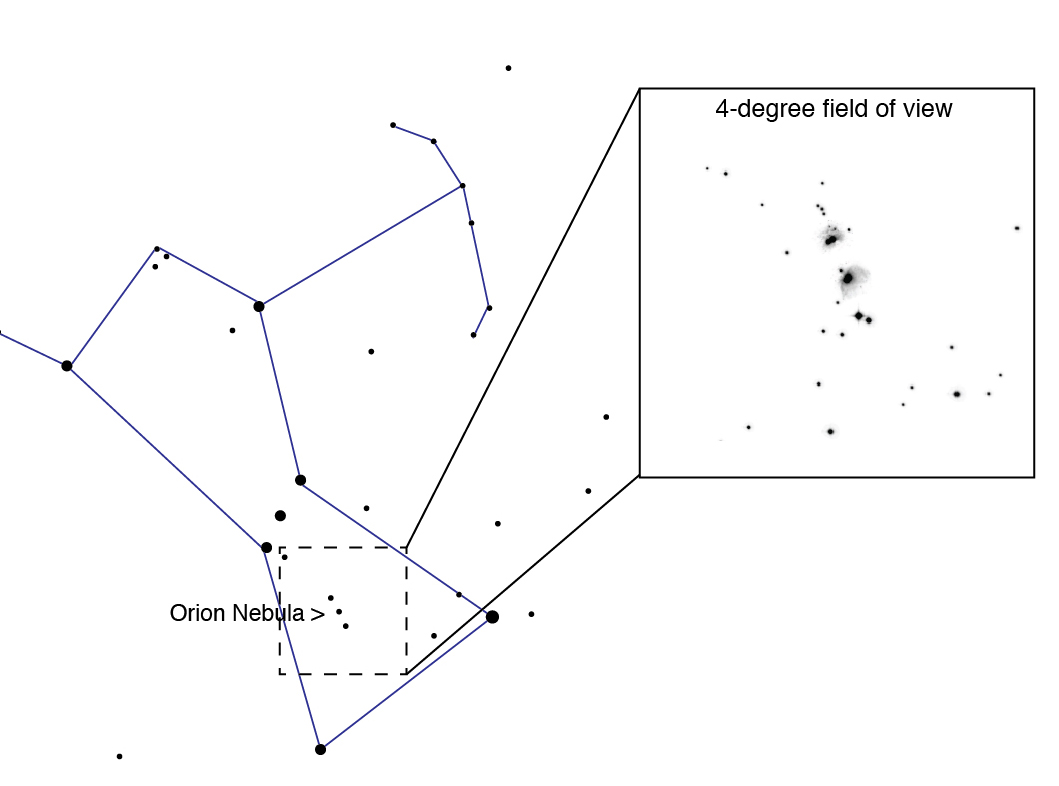Difference between revisions of "StarFormationInTheOrionNebula"
| (8 intermediate revisions by the same user not shown) | |||
| Line 1: | Line 1: | ||
| − | Newborn stars in the Orion Nebula wrapped in dusty blankets. | + | [[File:Orion.jpg|600px|thumb|center]] |
| + | '''Newborn stars in the Orion Nebula wrapped in dusty blankets.''' | ||
Credit: NASA/ESA and L. Ricci (ESO) | Credit: NASA/ESA and L. Ricci (ESO) | ||
| + | [[File:baby.jpg|200px|thumb|left]] | ||
| + | Ever looked through the window of a hospital nursery full of newborn babies? You may have noticed that the babies are wrapped in warm fleecy blankets. | ||
| − | |||
Ever looked through the window of a nursery full of newborn stars? In the constellation of Orion, the hazy area in the sword of Orion is an opening into a huge cloud of gas and dust where new stars are being born, called the Orion Nebula. | Ever looked through the window of a nursery full of newborn stars? In the constellation of Orion, the hazy area in the sword of Orion is an opening into a huge cloud of gas and dust where new stars are being born, called the Orion Nebula. | ||
| Line 11: | Line 13: | ||
But these blankets aren’t there to keep the stars warm. These blankets of gas and dust can, in a few million years, develop into planets that orbit around the stars. | But these blankets aren’t there to keep the stars warm. These blankets of gas and dust can, in a few million years, develop into planets that orbit around the stars. | ||
| + | [[File:M42.jpeg|300px|thumb|right|Orion Stellar Nursery]] | ||
Our star, the Sun, was born in a nursery similar to the Orion Nebula about five billion years ago. The infant Sun, too, was likely wrapped in a dusty blanket that transformed into the planets, including Earth, which now orbit our Sun. | Our star, the Sun, was born in a nursery similar to the Orion Nebula about five billion years ago. The infant Sun, too, was likely wrapped in a dusty blanket that transformed into the planets, including Earth, which now orbit our Sun. | ||
| − | + | ||
| − | If it's clear outside, you can see the Orion Nebula during the winter and early spring. | + | If it's clear outside, you can see the Orion Nebula during the winter and early spring. You can use binoculars or a telescope to see the clouds of dust and gas. |
Thanks to the Night Sky Network. | Thanks to the Night Sky Network. | ||
Latest revision as of 20:37, 2 February 2013
Newborn stars in the Orion Nebula wrapped in dusty blankets. Credit: NASA/ESA and L. Ricci (ESO)
Ever looked through the window of a hospital nursery full of newborn babies? You may have noticed that the babies are wrapped in warm fleecy blankets.
Ever looked through the window of a nursery full of newborn stars? In the constellation of Orion, the hazy area in the sword of Orion is an opening into a huge cloud of gas and dust where new stars are being born, called the Orion Nebula.
The Hubble Space Telescope has revealed that many of the infant stars in the Orion nursery are wrapped in blankets of warm gas and dust.
But these blankets aren’t there to keep the stars warm. These blankets of gas and dust can, in a few million years, develop into planets that orbit around the stars.
Our star, the Sun, was born in a nursery similar to the Orion Nebula about five billion years ago. The infant Sun, too, was likely wrapped in a dusty blanket that transformed into the planets, including Earth, which now orbit our Sun.
If it's clear outside, you can see the Orion Nebula during the winter and early spring. You can use binoculars or a telescope to see the clouds of dust and gas.
Thanks to the Night Sky Network.


